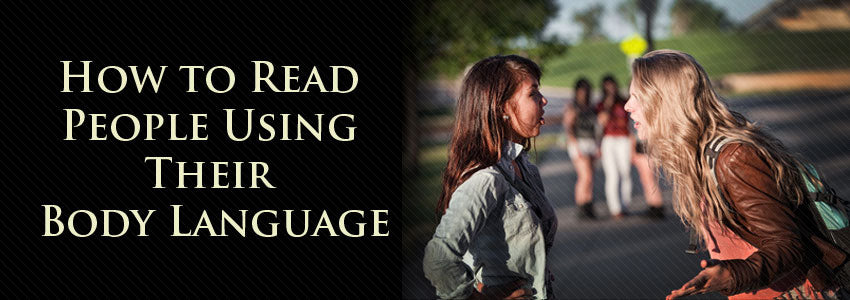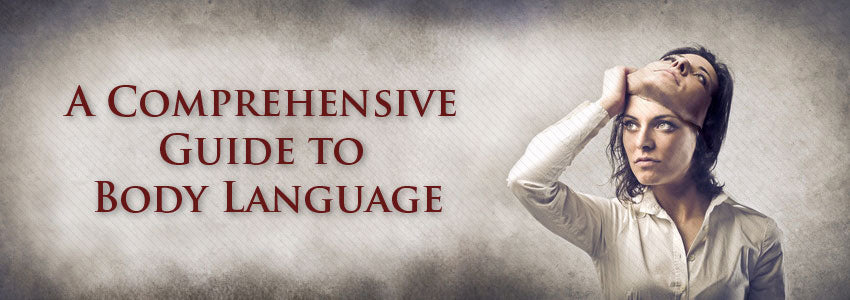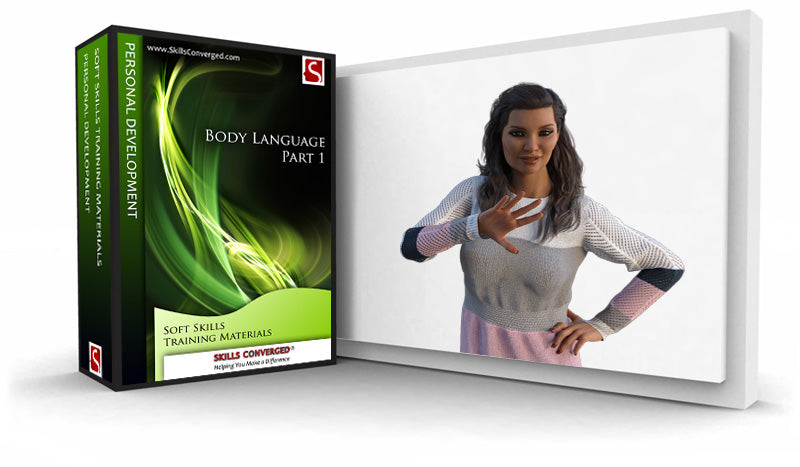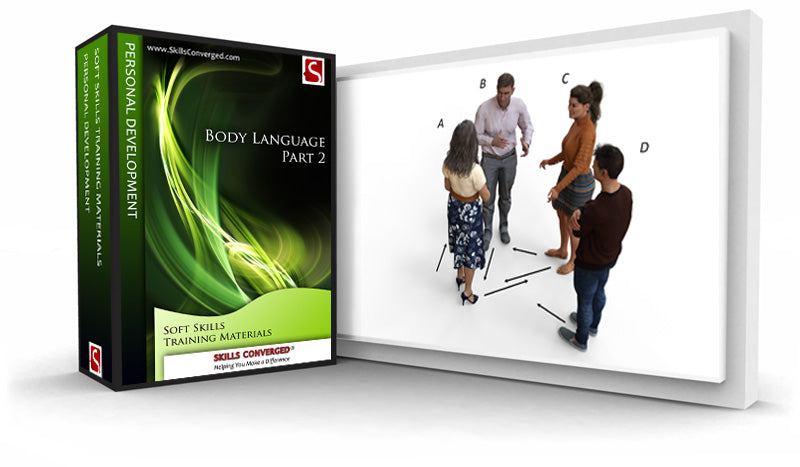
How to Read People Using Their Body Language
Is Body Language a Significant Part of Communication?
There is a famous study that has been quoted and misquoted frequently. Some of the quotes on this study include:
- 80% of all communication is non-verbal.
- Only 7% of how you communicate is through words.
- 55% is communicated through your body, 38% through your tone of voice and only 7% through words.
These statistics are based on Albert Mehrabian’s research on communication skills carried out in 1967 (Mehrabian 1967). The problem is that some people, in particular those in the media or even the training industry, have interpreted the results somewhat wrongly. Somehow they concluded that your words matter very little in comparison to your body language and tone of voice.
Let’s think about this for a second. If it was true, then you should be able to understand 93% of a foreign movie, since after all words don’t matter much and interpreting the body language along with the tone of voice is all that you need. We know from experience that this cannot be true, so let’s go back to the original study and see what it was all about.
The actual study showed that when people are in an emotional state, there are inconsistencies when attitudes are communicated verbally or posturally. Hence, in certain cases, the postural component tends to dominate and can be used to infer the real attitude of people. This is a significant outcome which has far reaching consequences. Here is what can be said of the study:
- Words are only part of the message we receive, but they are still critical. Communication also consists of non-verbal signals and tone of voice which can add or complement a meaning.
- When a speaker is talking about feelings and attitudes and there happens to be a mismatch between the words and the body language, we tend to rely more on body language to decide on the true intention of the speaker.
- Non-verbal signals support spoken words by transferring a speaker’s feelings.
- If we are only communicating through words, lack of other signals can lead to misinterpretation. This is particularly pronounced when the conversation is highly emotional. A classic example is miscommunication in text-based interactions such as e-mail or texting.
How to Improve Your Communication Skills
Now that you know the importance of body language and its interpretation, the question is how you should go about and read people by interpreting their non-verbal signals. Should you look for a particular gesture and as soon as you saw it conclude what is going on? Can you simply imitate a gesture and hope others will be deceived?
To read people’s body language with ease, consider following a simple formula known as the 3C’s. When interpreting non-verbal signals always consider Context, Clusters and Congruence. Here is what you need to examine:

Context
This is the environment where the action takes place. It also includes the history between interacting characters, their relationships and their roles. For example, crossing arms is usually a sign of being defensive. However, if a person is not wearing much and the room feels cold, the gesture may not be because they are defensive, it could just means that they are cold. Similarly if a person is a subordinate of another, it makes sense for him to show signs of submissiveness in the face of authority such as looking down or not maintaining constant eye contact. These signals should be interpreted within the context so you won’t conclude wrongly that a person is weak or lacks self-esteem just because of a particular gesture you have observed out of context.
Clusters
Always aim to read people’s non-verbal signals as a cluster, not individually. A single non-verbal signal can be misrepresentative and highly misleading. If you are ignoring the words and aiming to read the person non-verbally, you must look for all the signs that sum up a person’s behaviour and state of mind. For example, just because a person is sweating and touching his nose doesn’t mean he is certainly lying. These are also signs of being stressed, but the stress may not be necessarily as a result of lying. This is particularly well known in interrogations when a person, whether guilty or innocent, may exhibit such signs simply because of being under intense pressure in a high stakes situation under scrutiny of high-level authorities. To interpret correctly, you must look for all non-verbal signals and gestures that contribute towards a particular state and also those signals that might negate it.
Congruence
Once you have considered the context and looked for clusters of non-verbal signals, consider congruence; does everything fit together along with what the person is actually saying? Do you think the signals, the words and what you think of the person’s character lead to an obvious conclusion? Is there a discrepancy between the non-verbal signals and the verbal signals? What could this suggest? How can you probe deeper to understand the discrepancy better? Does the discrepancy suggest that the person is trying to deceive you or are there other reasons? Does it make sense in this context that the person’s body language should suggest something other than what the person is saying? In short, congruence suggests that to successfully read and interpret the signals you need to put everything together, including the words, to reach a meaningful conclusion.
Once you have considered all three C’s, you can then make an informed decision about the other person’s intention, attitude and thoughts.
An Example
Consider the following image. Using the three C’s look for signs to understand the situation by only observing the body language of the three people involved:

An example of reading body language
Interpretations
Man on the left
1. Hands are clasped and locked. He is defensive and doesn’t want to give any clues about his position.
2. Crossed legs. He is defensive.
3. Facial expression. He is not smiling and doesn’t look convinced. He is directly looking at the woman on the right who is his main concern.
4. Body orientation. His whole body is directly facing the woman on the right. He is confrontational with the woman on the right, and defensive. His feet also points towards the woman on right.
Woman in the middle
5. Gesturing. Heavy gesturing is used to justify a particular position.
6. Legs apart. Legs are not crossed and instead are apart. This suggests a threatening posture.
7. Direct eye contact with the woman on the right. Another confirmation of direct focus and an attack.
Woman on the right
8. Pointing to self. A classic defensive gesture justifying a position.
9. Legs are tightly closed. Suggests a defensive stance.
10. Direct eye contact. She is directly looking at the person who is attacking her to maintain focus.
References
Mehrabian, A. (1972) “Nonverbal Communication”, New Brunswick: Aldine Transaction.

All Articles in the Series
A Comprehensive Guide to Body Language
Origins of Humans and Body Language
How to Read People Using Their Body Language
How to Influence Your Emotional State Using Body Language
Body Language Across Different Cultures
Body Language of Defensive Attitude
Body Language of Good First Impressions
How to Improve Personal Impact
Continue Reading the Body Language Series..
Body Language Guide Article IndexBody Language Training Materials
Body Language Exercises
Explore our collection of free body language training exercises and articles:



Use this body language exercise at the beginning of a session before covering non-verbal communication. The aim is to find out how much delegates already know about this topic and...
The aim of this exercise is to get the delegates think about body language and gestures and observe how such signals can be instrumental while communicating. The training exercise illustrates...
This is an exercise in communication with the aim to increase awareness of body language and non-verbal communications.







